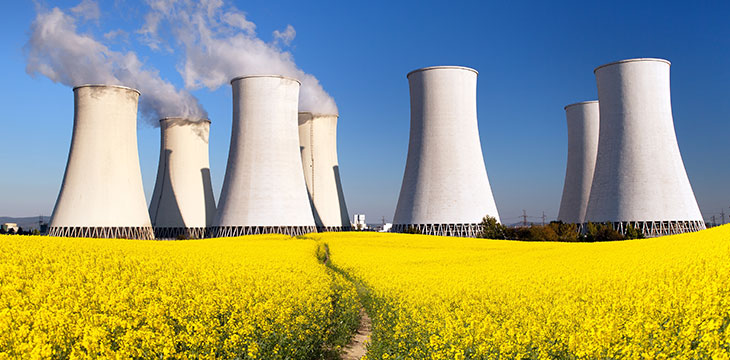|
Getting your Trinity Audio player ready...
|
One of the great things about the cryptocurrency ecosystem is how developers and individuals are able to think outside the box. Cryptocurrency itself is an “outside the box” endeavor and the advances seen since it was first detailed by Satoshi Nakamoto have been nothing short of incredible. One of the most novel approaches to the cryptocurrency industry, specifically the mining industry, was recently covered by an op-ed piece on Bitcoin.com. Hopefully, it will get the serious attention it deserves.
There have been a number of attempts to portray cryptocurrency mining operations as being energy hogs. While this has already proven to not be true, it still helps that an alternative solution be found. That solution is possible by joining mining operations with nuclear reactors.
As stated in the opinion piece, nuclear reactors, by their nature, can never be turned off. They operate around the clock, all day, every day, throughout the year. “Nuclear fission, the physical process that releases energy in a nuclear reactor, cannot be paused or stopped at will. It can only be temporarily restrained,” explains the article’s author, Lubomir Tassev.
This restraint doesn’t change the amount of fuel that is used. The only outcome is a waste of energy. This is where cryptocurrency mining can enter and take over. Instead of letting that energy go unused, it could be used for mining operations.
The issue is not just an economical one. Certainly, since there is no change in the energy output, the costs remain the same regardless of how much energy is distributed to the grid. However, there are also engineering concerns associated with the suppression of the reactors.
For a reactor to be suppressed, or restrained, according to the author, control rods are inserted into the reactors, which almost literally “slams on the brakes” inside the reactor. Anyone who has studied even basic physics knows that there is an equal and opposite reaction to every action, and the action of applying the brakes results in a significant amount of force being physically exerted on the reactor.
This process causes significant stress on the plant and some plants have been shown to not withstand more than two years of steady load following, as it’s called. This is obviously a concern to the physical integrity of the plant, but cryptocurrency mining would remove the load following, or a large portion of it, which will allow the reactors to have longer useful lives.
If we admit that blockchains are here to stay and that cryptocurrency mining operations are an integral part of blockchains, the logical conclusion is that we should be exploring all available options to make the activity work as efficiently and safely as possible. It would seem that a union between nuclear reactors and mining is a perfect match.

 12-23-2025
12-23-2025 




